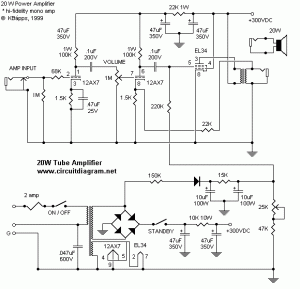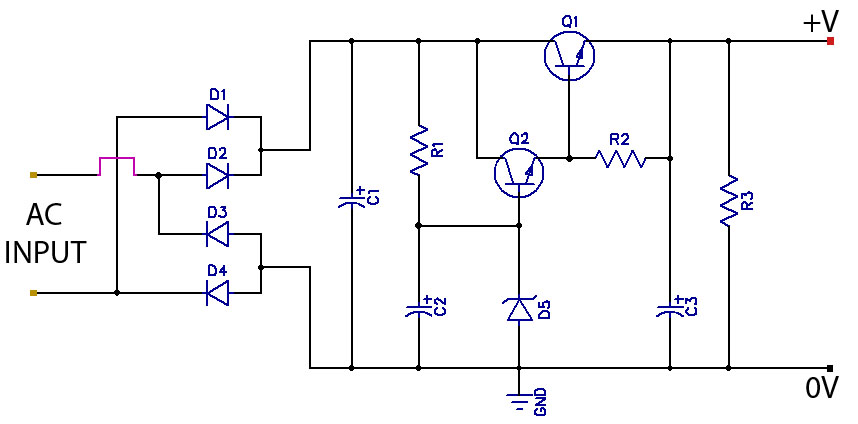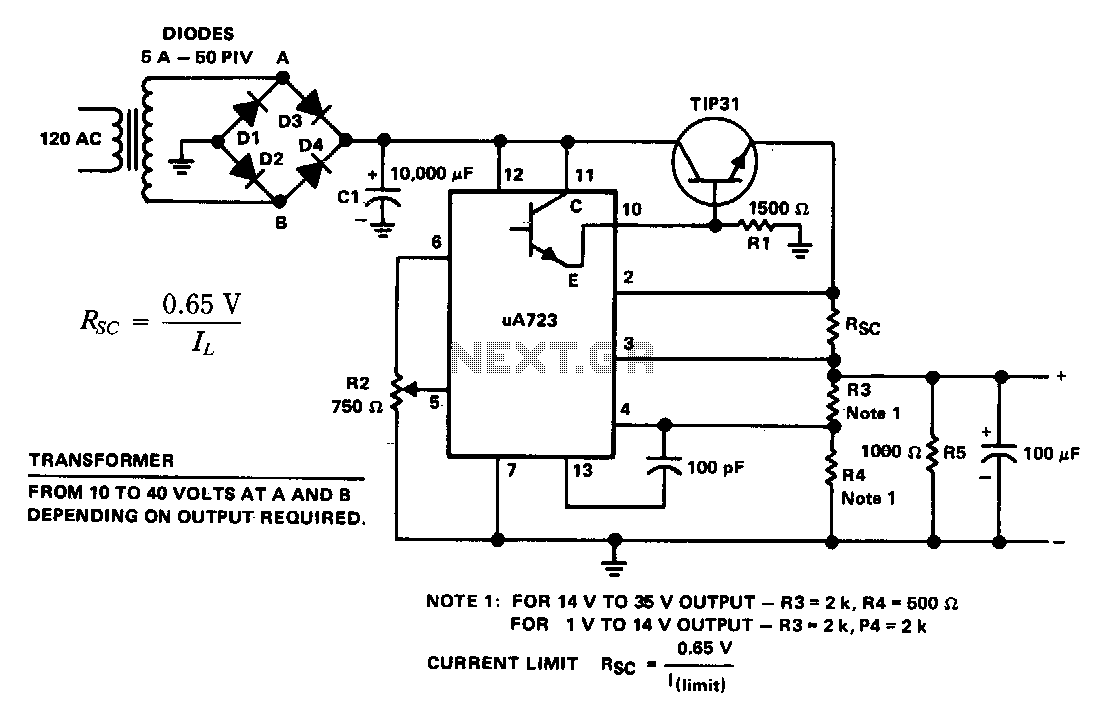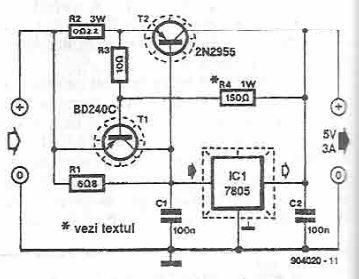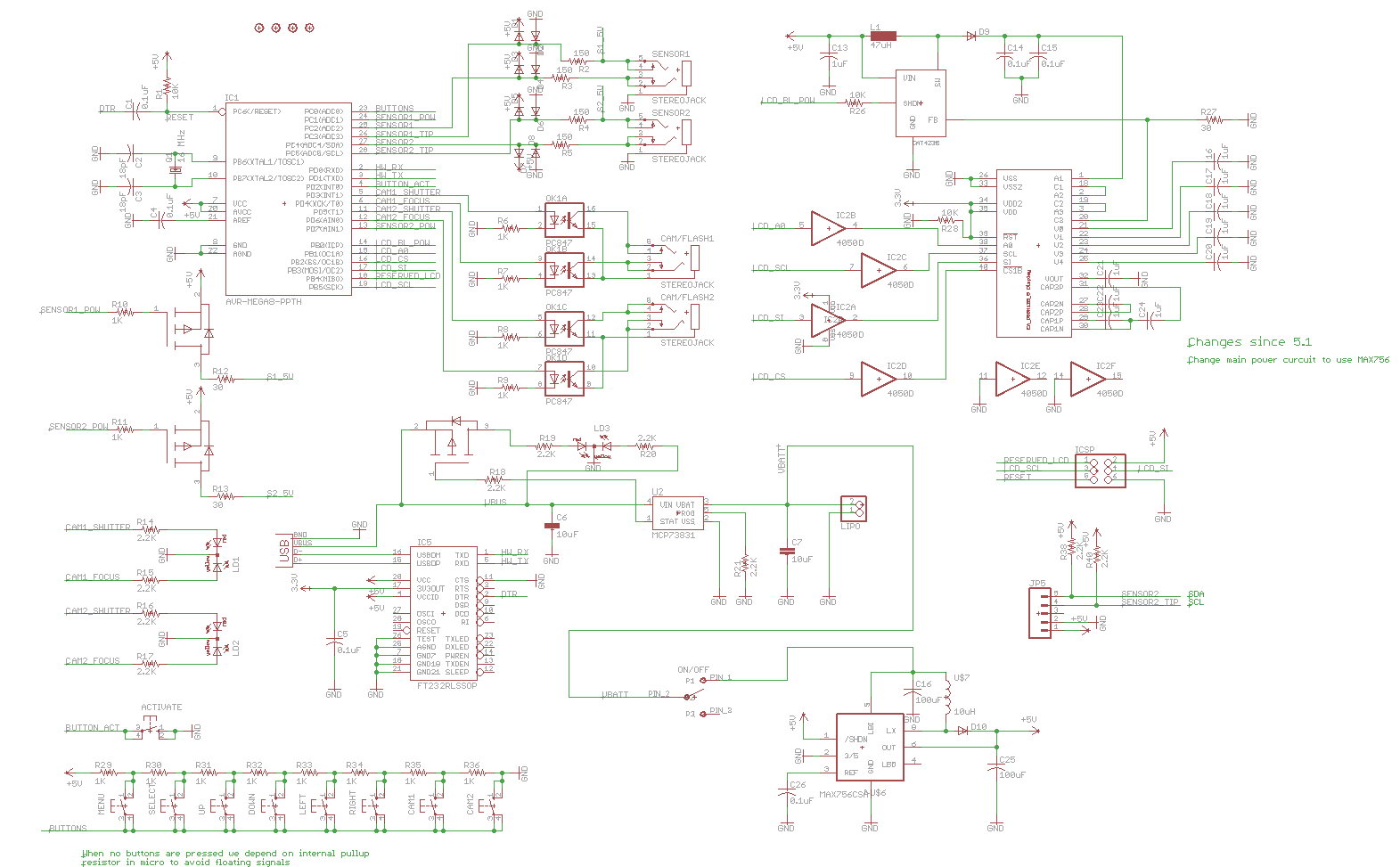
1,5-15V 500mA Power Supply
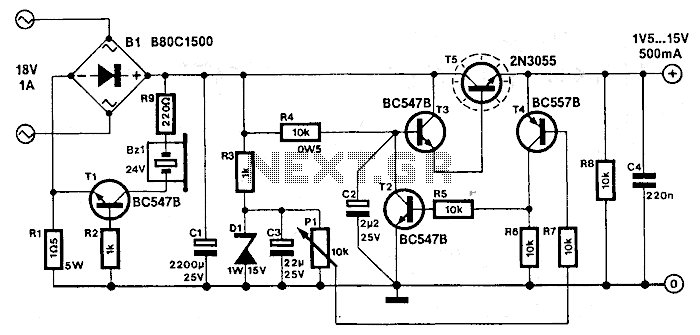
This simple variable power supply circuit has a low production cost and delivers an output voltage between 1.5 V and 15 V with a 500 mA maximum current. Its stabilization is better than 2% if the current consumption does not exceed 350 mA. The variation of the power supply voltage can be made with a potentiometer and when overloading occurs, a buzzer sounds an alarm. More: T4 compares the P1 slider voltage with the output voltage. Then the P1 slider voltage is 0.65 V higher than the adjusted voltage, T2 opens, which stops the T3-T5 Darlington base current. The 18V, 1A transformer voltage must be filtered with B1 and C1. When the output current is more than 500 mA, the Bz1 starts the alarm (overloading). Bz1 must be a 24 V type, auto-oscillating.
The described variable power supply circuit is designed for low-cost applications while providing a range of output voltages from 1.5 V to 15 V, with a maximum current output of 500 mA. The circuit employs a potentiometer (P1) to allow for adjustable output voltage, enabling users to set the desired voltage level within the specified range. The stability of the output voltage is maintained within a tolerance of 2% as long as the load current remains below 350 mA, ensuring reliable performance for various applications.
The operational mechanism involves a feedback control system where transistor T4 monitors the voltage at the P1 slider compared to the output voltage. If the slider voltage exceeds the output voltage by 0.65 V, transistor T2 is triggered to open, effectively cutting off the base current to the Darlington pair formed by transistors T3 and T5. This configuration helps to regulate the output voltage by controlling the current flow through the power transistors, thus preventing over-voltage conditions.
The input power to the circuit is provided by an 18V, 1A transformer, which requires filtering to smooth out the rectified voltage. Capacitor C1 and diode B1 are employed for this purpose, ensuring that the output voltage remains stable and free from ripple.
In the event of an overload condition, where the output current exceeds 500 mA, an alarm is activated by buzzer Bz1. This buzzer is specified to operate at 24 V and is of the auto-oscillating type, providing an audible signal to alert users of the overload condition. This feature enhances the safety and usability of the power supply circuit, making it suitable for various electronic projects and applications where adjustable and stable voltage is required.This simple variable power supply circuit has a low production cost and delivers an output voltage between 1,5 V and 15 V with a 500 mA maximum current. Its stabilization is better than 2% if the current consumption do not exceed 350 mA. The variation of the power supply voltage can be made with a potentiometer and when overloading occurs a buzzer sounds a alarm.
T4 compairs the P1 slider voltage with the output voltage. Then the P1 slider voltage is 0,65 V higher than the adjusted voltage, T2 opens, which stops the T3-T5 Darlington base current. The 18V, 1A transformer voltage must be filtered with B1 and C1. When the output current is more then 500 mA, the Bz1 starts the alarm (overloading). Bz1 must be a 24 V type, auto-oscillating. 🔗 External reference
The described variable power supply circuit is designed for low-cost applications while providing a range of output voltages from 1.5 V to 15 V, with a maximum current output of 500 mA. The circuit employs a potentiometer (P1) to allow for adjustable output voltage, enabling users to set the desired voltage level within the specified range. The stability of the output voltage is maintained within a tolerance of 2% as long as the load current remains below 350 mA, ensuring reliable performance for various applications.
The operational mechanism involves a feedback control system where transistor T4 monitors the voltage at the P1 slider compared to the output voltage. If the slider voltage exceeds the output voltage by 0.65 V, transistor T2 is triggered to open, effectively cutting off the base current to the Darlington pair formed by transistors T3 and T5. This configuration helps to regulate the output voltage by controlling the current flow through the power transistors, thus preventing over-voltage conditions.
The input power to the circuit is provided by an 18V, 1A transformer, which requires filtering to smooth out the rectified voltage. Capacitor C1 and diode B1 are employed for this purpose, ensuring that the output voltage remains stable and free from ripple.
In the event of an overload condition, where the output current exceeds 500 mA, an alarm is activated by buzzer Bz1. This buzzer is specified to operate at 24 V and is of the auto-oscillating type, providing an audible signal to alert users of the overload condition. This feature enhances the safety and usability of the power supply circuit, making it suitable for various electronic projects and applications where adjustable and stable voltage is required.This simple variable power supply circuit has a low production cost and delivers an output voltage between 1,5 V and 15 V with a 500 mA maximum current. Its stabilization is better than 2% if the current consumption do not exceed 350 mA. The variation of the power supply voltage can be made with a potentiometer and when overloading occurs a buzzer sounds a alarm.
T4 compairs the P1 slider voltage with the output voltage. Then the P1 slider voltage is 0,65 V higher than the adjusted voltage, T2 opens, which stops the T3-T5 Darlington base current. The 18V, 1A transformer voltage must be filtered with B1 and C1. When the output current is more then 500 mA, the Bz1 starts the alarm (overloading). Bz1 must be a 24 V type, auto-oscillating. 🔗 External reference
